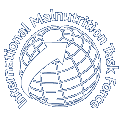Why is it recommended to give very little protein to severely malnourished children initially?
The reason is that the liver is unable to cope with large amounts of protein initially. Part of the process of ‘reductive adaptation’ in response to an inadequate food intake is a reduction in the functional capacity of organs and reduced activity inside cells. Protein cannot be used for tissue synthesis until the metabolic machinery is repaired. Unused protein has to be degraded and excreted, so providing a lot of protein before the metabolic machinery is repaired causes extra work for the liver and kidneys. Also any accumulation of unused amino acids leads to loss of appetite. Hence the aim it to give just sufficient protein to cover maintenance needs<
Can infant formula be used instead of F75?
Infant formula is designed to promote a normal rate of growth (about 1g/kg/day). During the stabilisation phase, severely wasted or oedematous children will have gone through a process of reductive adaptation to conserve energy and this affects the working of all cells, organs and systems in the body. The body ‘shuts down’ and it may take a few days to get the metabolic machinery working again. The body is not ready to resume growth yet. During this initial period it is important not to stress the liver, kidneys, heart and gut. The aim is to cover the basic maintenance needs for energy (100kcal/kg/day) and protein (1g/kg/day), and not to overload the gut with lactose, or the kidneys with sodium, and not to add iron.
F75 is designed to be low in protein, lactose, sodium and iron, modestly high in sugar to prevent hypoglycaemia, and with sufficient energy to maintain energy balance. It is therefore the ideal feed to give during stabilisation.
Can infant formula be used instead of F100?
Infant formula is designed to promote a normal rate of growth (about 1g/kg/day). The aim of the rehabilitation phase is rapid weight gain. Each new gram of tissue costs about 5kcal. Severely malnourished children will grow 20 times faster than normal children of the same weight, but to achieve this they will need plenty of energy, protein and micronutrients. Infant formula does not have enough energy and protein to support rapid growth as it is designed for slow-growing normal children. If severely malnourished children are fed infant formula, they will gain weight very slowly.
F100 contains:
- Protein 2.9g
- Energy 100 kcal
- % energy from protein 12%
Can diluted F100 be used instead of F75?
Diluted F100 is not considered an appropriate alternative to F75 because its higher protein, sodium, and lactose contents are disadvantageous.
What feed should be given to infants under 6 months?
During the stabilisation phase infants under 6 months should be given F75 or expressed breast milk (130ml/kg/day). During rehabilitation there is no clear-cut recommendation: expressed breast milk, F100, diluted F100, and infant formula have been proposed. Click here to download the Report of a Consultation to Review Current Literature on Severe Malnutrition, WHO, 2004.
If a severely malnourished child is hungry on admission, should they go straight to F100?
Children are brought to hospital usually because they are ill – typically with diarrhoea or pneumonia. Appetite of itself is not necessarily a good guide to the ability of an individual to cope with generous amounts of food. If the child has severe wasting and/or oedema it is best to be cautious and start with F75.
The signs for readiness for transition from F75 to F100 are that the child is very hungry, reduced/minimal oedema, and the child has been tolerating F75 well with little watery diarrhoea. If the child arrives and is already very hungry with minimal oedema, then give F75 for one day to be cautious and see the extent of any watery diarrhoea. If the child tolerates F75 well then start the transition to F100. Give F100 at the same volume for body weight as you would for F75 and keep this volume for 2 days and then start to increase by 10ml at each successive feed (intake should then be in the range 150-220kcal/kg/d).
What is F135 and when should it be used?
F135 is more energy and protein-rich than F100, so children fed F135 gain weight more rapidly than children fed F100. It has a higher osmolarity and higher renal solute load than F100 so it is not advisable to give F135 to infants under 6 months or to children with diarrhoea. It is good for severely malnourished children who are gaining only slowly in the rehabilitation phase, or for children who may attend only during the day (to maximise the energy intake during this period). The WHO guidelines on inpatient management provide a recipe for F135.
Can we develop our own local recipes for F75 and F100 to feed malnourished children especially in situations where these feeds may not always be readily available?
Yes, this can be done provided the correct composition of nutrients is achieved. Every effort should be made to use milk for F75. Recipes for F75 and F100 using different types of milk can be found in WHO publications, or Ashworth & Burgess 2003. The latter also gives examples of recipes for F100 using family foods.
Can we use whole milk instead of dried skimmed milk in case of shortage of the latter to constitute F75?
Yes. You can use fresh whole milk, or long-life milk or dried whole milk. The recipes can be found in WHO guidelines or Ashworth & Burgess 2003.
Can F100 feeds be used to treat severely malnourished children in community- or home-based care?
In theory yes, but the necessary utensils for its preparation may not be available. Also it spoils quickly without refrigeration. So modified family foods or Ready-to-Use Therapeutic Food (RUTF) are usually more feasible. RUTF is high in energy and contains all the nutrients needed for rapid weight gain.
